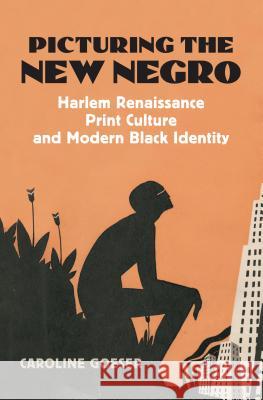Picturing the New Negro: Harlem Renaissance Print Culture and Modern Black Identity » książka
topmenu
Picturing the New Negro: Harlem Renaissance Print Culture and Modern Black Identity
ISBN-13: 9780700614660 / Angielski / Twarda / 2007 / 376 str.
During the 1920s and 1930s, black artists and writers achieved something totally unprecedented: they created a new image of African Americans that truly reflected their times as well as their history. In so doing, they set the artistic agenda of the Harlem Renaissance and gave form to some of its most compelling visions.
This innovative study examines the efforts of Harlem Renaissance artists and writers to create a hybrid expression of black identity that drew on their ancient past while participating in contemporary American culture. Caroline Goeser investigates a critical component of Harlem Renaissance print culture that until now has been largely overlooked, arguing that illustrations became the most timely and often most radical visual products of the movement. This vibrant partnership between literary and visual talents--a trail blazed by artist Aaron Douglas and poet Langston Hughes--resulted in the image of the New Negro, one that remade the African American past in order to foster greater participation in modern American culture and commerce. Illustrations by Douglas, James Wells, Gwendolyn Bennett, and others appeared on covers of books about black American life and in journals such as Opportunity and The Crisis. Goeser considers the strategies that these artists developed to circumvent stereotypes and shows how their work was received within the movement and in mainstream America. Connecting visual imagery with literary text and commercial enterprise, these illustrations participated in the modern economy in ways that painting and sculpture could not. Goeser reveals how Harlem Renaissance illustrators depicted the wide-ranging and sometimes conflicting ideas about black identity held within the community: African roots and Egyptian heritage, racial uplift and gay pride. She shows how some artists revisited the Judeo-Christian tradition by portraying a black Adam and Jesus, and examines the interdependent relationships between race and sexuality in the work of artists Richard Bruce Nugent and Charles Cullen, the former black, the latter white. Goeser clearly shows that, contrary to common belief, the visual image of the New Negro was created by African Americans, for African Americans. Her work assigns a central role to black artists as cultural innovators intimately involved with the construction of identity and new expressive paradigms and is a new touchstone in understanding both the emergence of black identity and American culture between the world wars.










